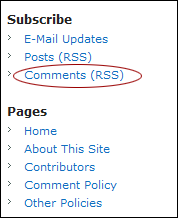We’ve received a lot of questions about the Recovery Act faculty recruitment funding announcement. In addition to posting the questions and answers in our Recovery Act FAQs, I thought I’d share them here on the Feedback Loop.
What is the intent?
The intent is to contribute to startup packages for junior faculty so that they have a good foundation for becoming independent, tenure-track faculty members who are competitive for NIH awards.
Why does this use the P30 mechanism?
For technical reasons, this funding opportunity uses a research core. Despite the use of this mechanism, NIGMS does not intend our awards to be anything like a conventional resource or service core.
How will applications be reviewed?
Applications will be reviewed by standard NIH review procedures, in this case a special emphasis panel. Reviewers will consider the institutional selection process and environment, including how candidates will be identified and selected, the departmental and institutional track record for attracting junior faculty and programs available for their professional development.
Please note that we do not intend to make awards based on area of science or specific faculty candidates (more on this later).
How do I format the application?
It is difficult to address application requirements using the standard format of Aims, Background, Preliminary Data and Design and Methods sections. My suggestion is to play it straight! For example, include the history of the search in the Background section and describe the recruitment process in the Design and Methods section. Using subheads also helps.
Should I include a description of the general resources for the whole department, or a general description of what the resources might be for a new faculty member?
My best advice is to frame it in terms of what would be relevant to the area of research–computational clusters, 2P microscopes, MALDI-TOF spectroscope, etc. Departmental resources are undoubtedly sufficiently multi-purpose that you can make access to them a positive feature of your application.
Can we use the award to support more than one recruitment effort?
Yes, but bear in mind that our intent is to produce competitive startup packages in cases of demonstrable need.
Can we use the award to support collaborators and/or co-investigators?
No, funds should be for the support of the new faculty member.
Would a junior faculty recruit who has recently (within the last month) received and accepted an offer be eligible for funding under the P30 mechanism?
No, the funding opportunity announcement specifically precludes this.
Is it appropriate and/or expected to identify potential specific new faculty candidates by name and with a brief description of credentials?
Specific identities are not appropriate, but you should describe the characteristics of the desired applicant pool—high-impact publications, prestigious awards, etc.
The funding opportunity announcement states “describe plans for how their research ideas will be selected, developed and conducted as pilot research projects.” Does this mean we should include funds for supporting pilot research projects in the P30 application budget?
Pilot research projects per se should not be proposed. Rather, you should discuss the general research context and how the interests of a candidate will align with and expand your strategic vision. You should discuss drivers of your funding timeline—when you anticipate the recruit to start, anticipated salary, equipment needs, etc.


